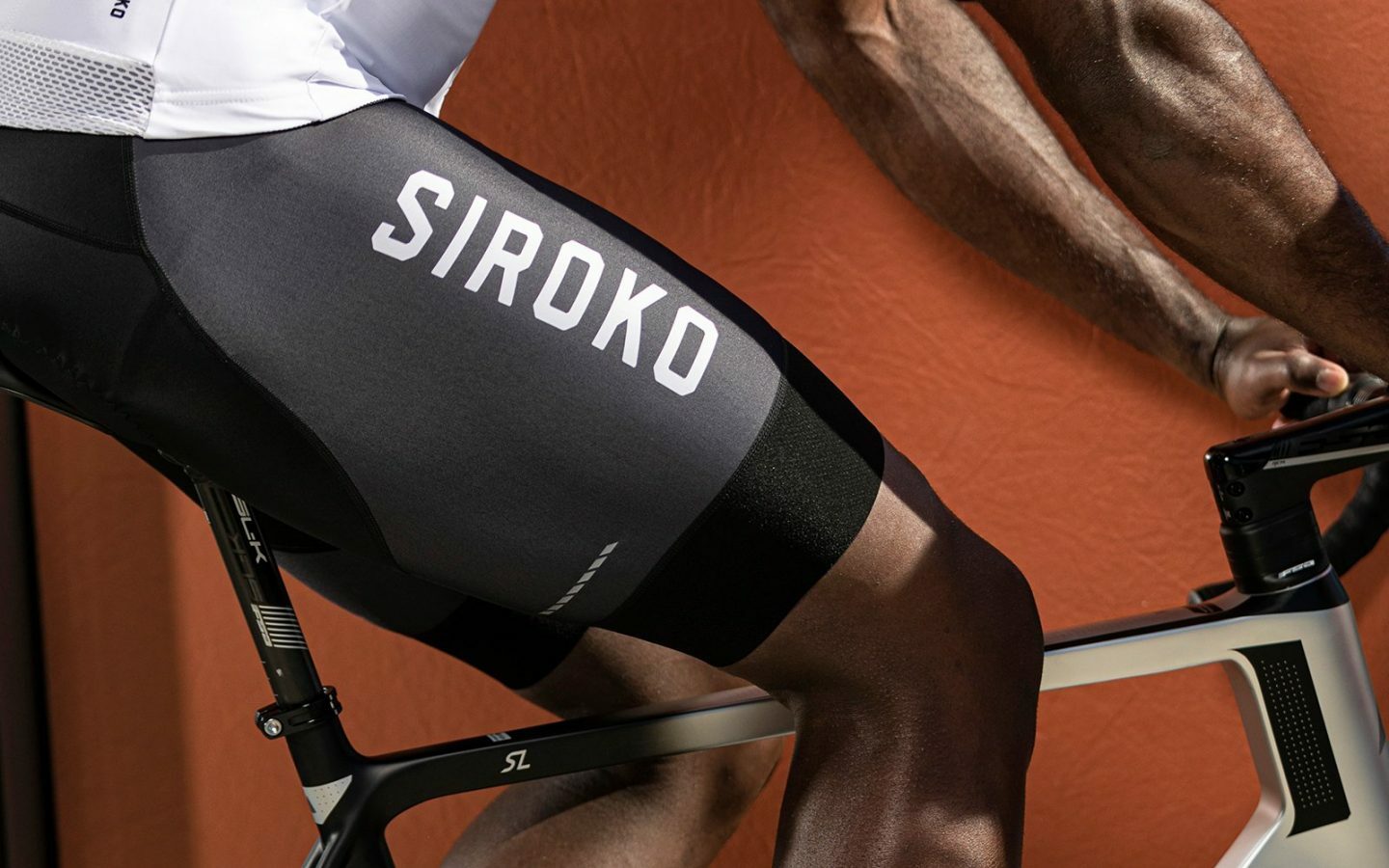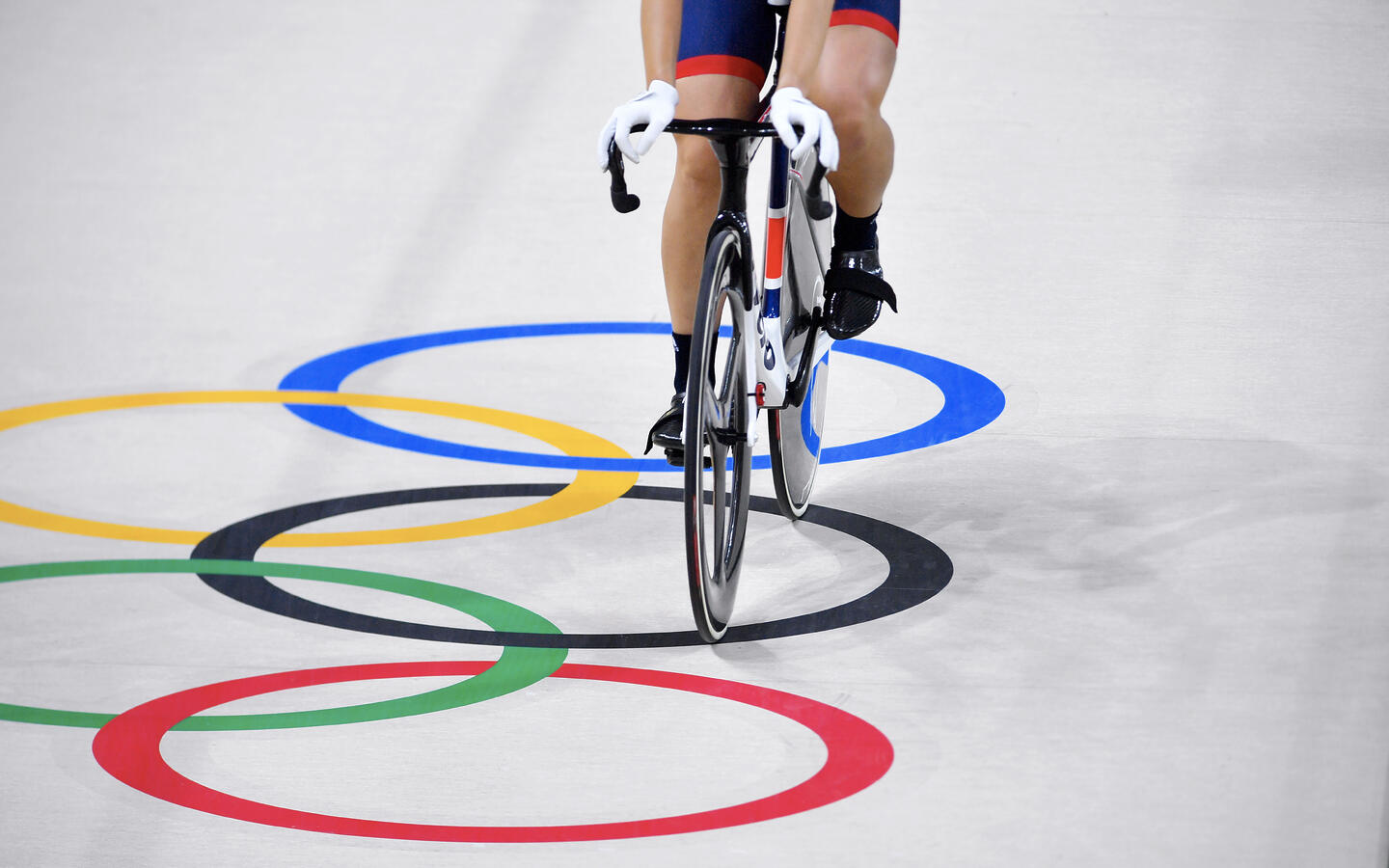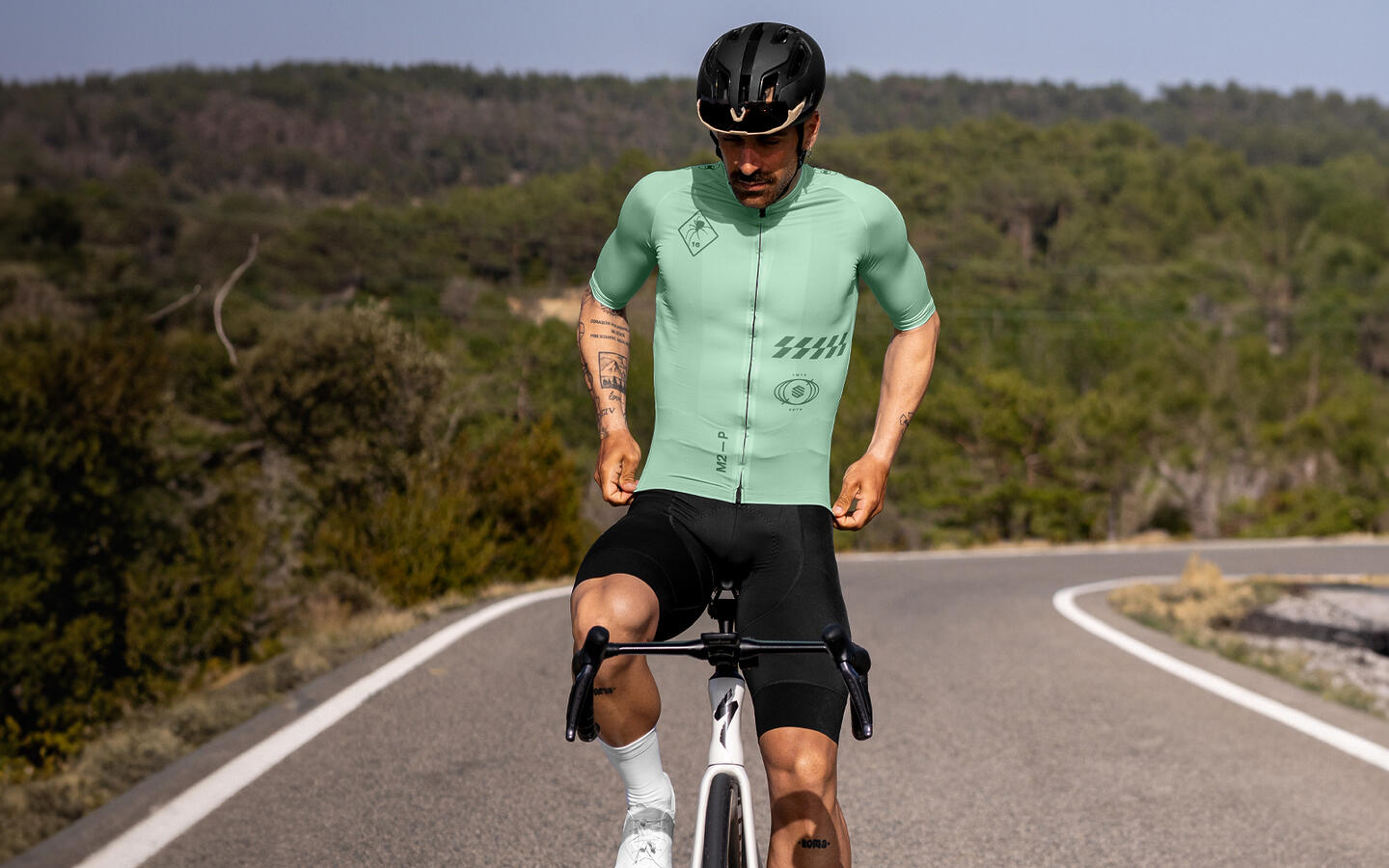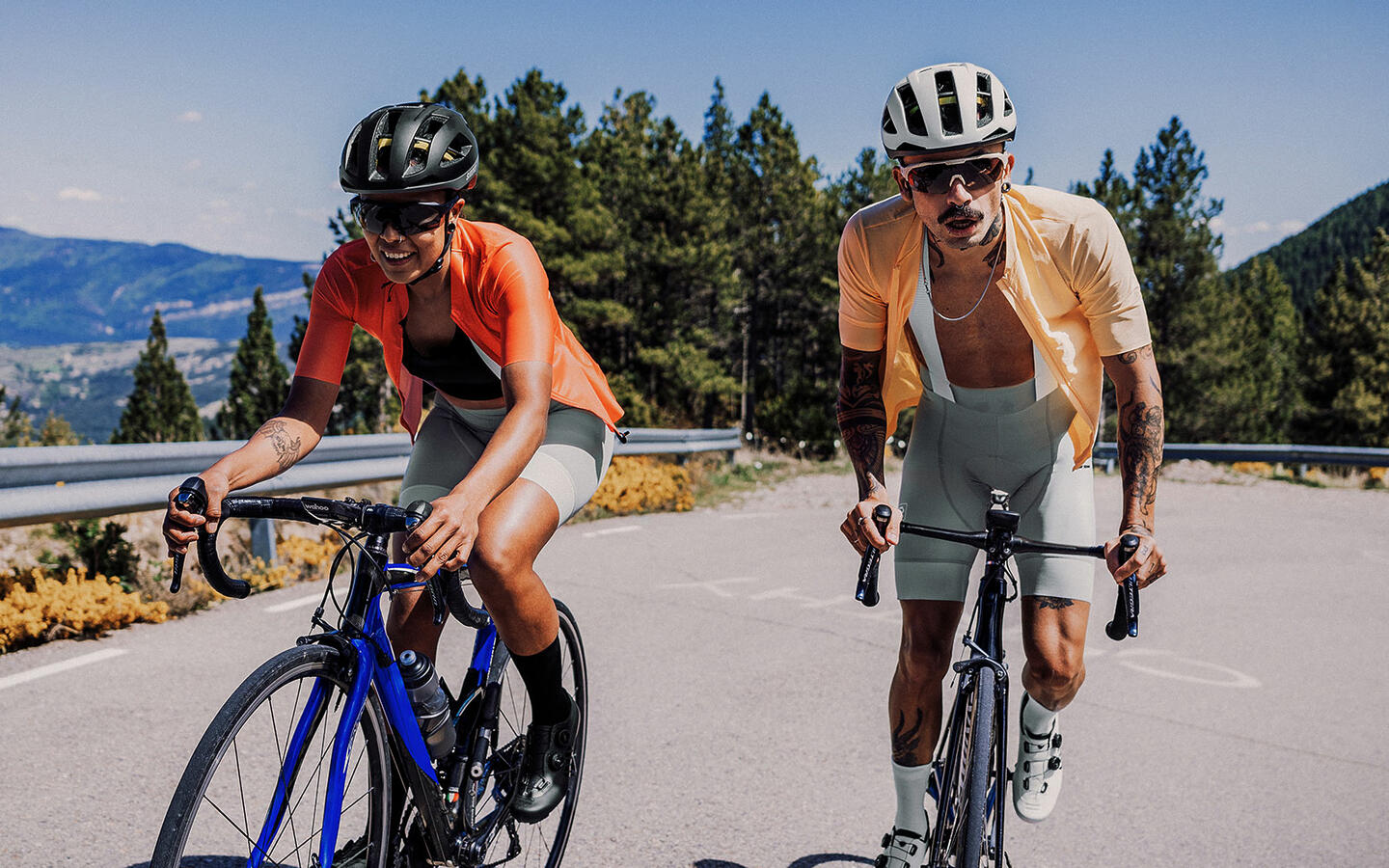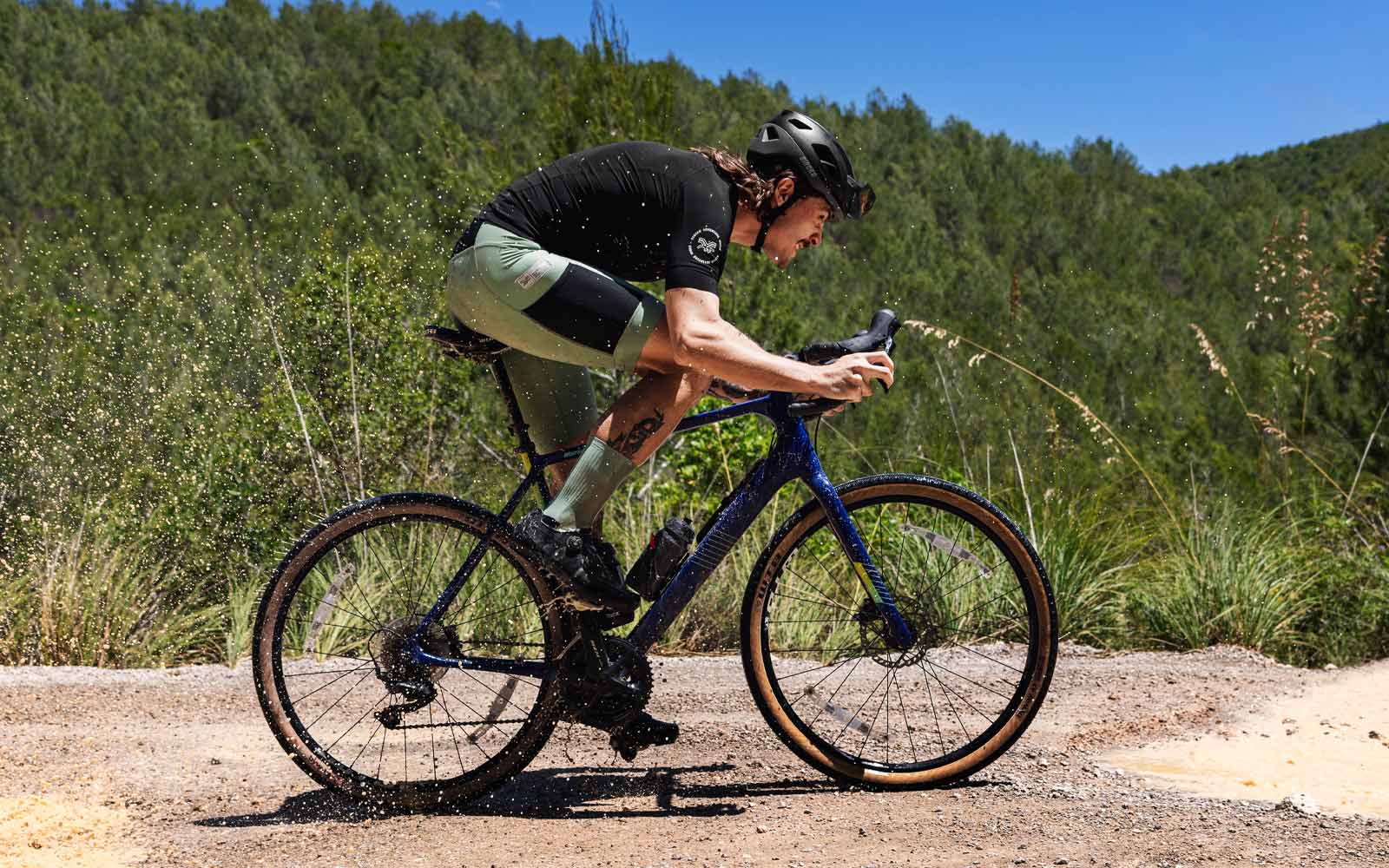The muscles that work the most on the bike are in your legs, as you have to move them to pedal. But they are not the only ones involved, there are a whole series of other muscles playing an important role in cycling. The most significant one is the gluteus maximus but we also need a strong core and heart – without it, the rest of our “muscle machine” simply would not work. If our heart is the engine, the pistons are in our hips. From the waist down we can find the muscles we use while pedaling. The main ones are as follows:
- Gluteus Maximus, belonging to the gluteus muscle group.
- Semimembranosus and Biceps Femoris, belonging to the hamstring muscle group.
- Vastus Medialis, Rectus Femoris and Vastus Lateralis, all three belonging to the Quadriceps.
- Gastrocnemius, commonly known as Calves
- Soleus
- Tibialis Anterior
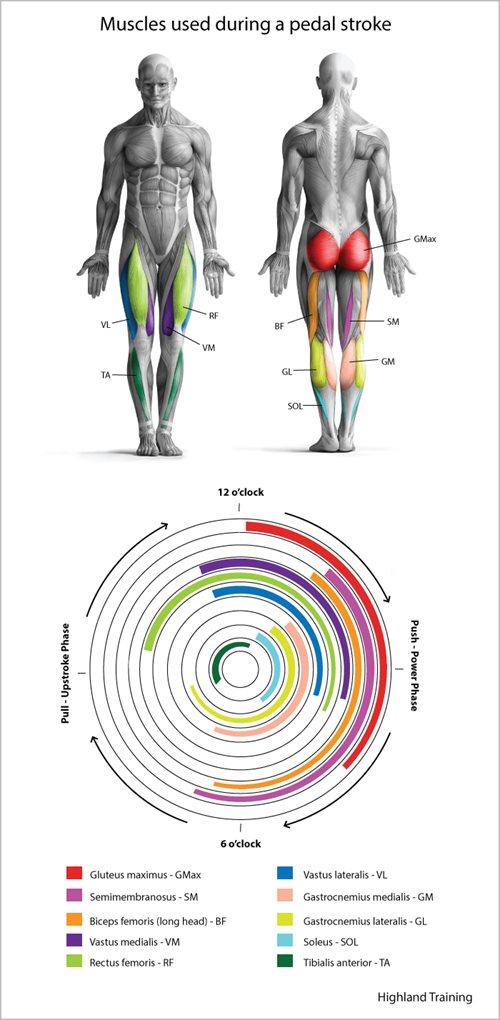
Just imagine a pedal stroke as a movement around a clock face. At each point in time we are using different muscles at different intensities. The greatest force is exerted between 12 and 6 o’clock (especially up to 5 o’clock) when we push the pedal down. Between 6 and 12 o’clock the force comes from the other leg and from the inertia of the pedal stroke. Pulling the pedal up does not improve efficiency, quite the contrary. It only makes sense in some situations in mountain biking (steep climbs and/or low traction) and in track cycling.
Gluteus Maximus
The gluteus maximus is the largest muscle located in the buttocks, and also the largest one in the whole body. It is one of the major power generators in pedaling (about 30%). It works at full capacity when we push the pedal down, between 12 and 5 o’clock. Its correct activation and functioning not only bring power to the pedal stroke but also provide balance and stability to the hips and knees, two of the three joints used in pedaling. If the flexion, extension, as well as internal and external rotation of the hip are not done correctly we will be in trouble. That is why we must work the glutes in the gym and learn to pedal using this muscle to get more endurance than by using only the quadriceps.
Semimembranosus and Biceps Femoris
These two muscles, together with the semitendinosus, form the hamstrings muscle group in the back area of the thigh. In the pedaling clock they work between 1:30 and 6:30. There is a misconception that due to being in the rear area they are not as important and many cyclists forget about them when doing strength exercises. That’s a mistake. They are key for two actions we have already mentioned: knee flexion and hip extension. Without joint movement there is no pedaling. At 90 revolutions per minute (RPM) we flex the knee and extend the hip 5,400 times within one hour. No kidding. If they paid 1 cent for each one of them there would be cyclists with more cadence than Chris Froome.
Vastus Medialis, Rectus Femoris and Vastus Lateralis
Three of the four muscles making up the quadriceps, the other main source of power in pedaling (around 40%). The vastus medialis and vastus lateralis wake up at 11 o’clock and work little but intensely until 4 o’clock. Not that they are lazy, but they do leave much of the work to the early-rising rectus femoris that starts pedaling at 9 o’clock and continues to work hard until 4 o’clock. The function of the quadriceps is not only to provide power to the cyclist, it must also bring stability to the knee and, as the rectus femoris starts at the pelvis, they are also instrumental in hip flexion.
As the quadriceps muscles are every cyclist’s hallmark, they are the most cared for and worked muscle group both on the bike and in the gym. Let’s be honest, we all love pushing hard on the pedals and seeing the muscles work underneath the bib shorts.
Gastrocnemius
More commonly known as the calf muscle, the gastrocnemius is yet another muscle that cyclists love to see tuned and well defined. It has two heads: medial and lateral. Together with the soleus, they are responsible for around 20% of the pedaling power, although the time and amount of work differs among them. All three are activated between 1 and 2 o’clock. The soleus keeps active until 5 o’clock, the medial gastrocnemius until 6:30, and the lateral gastrocnemius until almost 9 o’clock, although with a lower intensity.
Soleus
The third, invisible head, making up the triceps surae along with the calf muscles. Its tendon tissue merges with the gastrocnemius tissue to form the largest tendon in the human body, the Achilles tendon. It is a key muscle in walking and running, which is why many soleus injuries occur in athletics. Cyclists also experience problems in this area due to incorrect saddle height or poorly adjusted cleats. Cyclists often do not extend the knee correctly when pedaling and lower the heel excessively, sometimes even below the pedal at the lowest point of the pedal stroke.
Tibialis Anterior
Last but not least, the only muscle on our list that is activated during the upward phase of the pedal stroke. The tibialis anterior works from just before 9 o’clock until just after 12 o’clock. Together with the gastrocnemius and soleus (its antagonists), it does an important job of keeping the balance in the knee and ankle when pedaling. Hence, as we mentioned above, the correct adjustment of the saddle height and cleats is instrumental.
These are the main muscles, but they are not the only ones involved. As we said at the beginning, having a well-trained and strong core is also of utmost importance. Starting with the abdominal and lumbar muscles, then focusing on the erector spinae and going all the way up to the shoulders and arms. All of this is necessary to efficiently transmit the power up from your legs when pedaling, because when you’re pushing the pedals down, you are leaning onto the saddle and the handlebars.
Which muscles work and how hard they do so depends on the biomechanics of pedaling. If you are interested in further information, this study offers plenty of scientific data. It states that “the level and/or timing of muscle activation change as a function of numerous factors such as power output, pedaling rate, body position, shoe–pedal interface, training status and fatigue”.
In this study you can find information on how our position on the bike affects the level and/or moment of muscle activation. In a nutshell: The differences between level seated pedaling and uphill seated pedaling are minor. There are noticeable differences between riding in an upright posture and a dropped posture. And there are significant changes when pedaling out of the saddle uphill.
Finally, let us stress the importance of a correct position on the bike. Do not worry too much about it if you are an occasional cyclist. Just do a little research and you will easily find various tutorials and apps to help you adjust your bike. But if you are a regular cyclist remember to work on your core at home or at the gym and, above all, have a biomechanical analysis done to be as comfortable as possible on the saddle and to make sure your pedaling is efficient.
